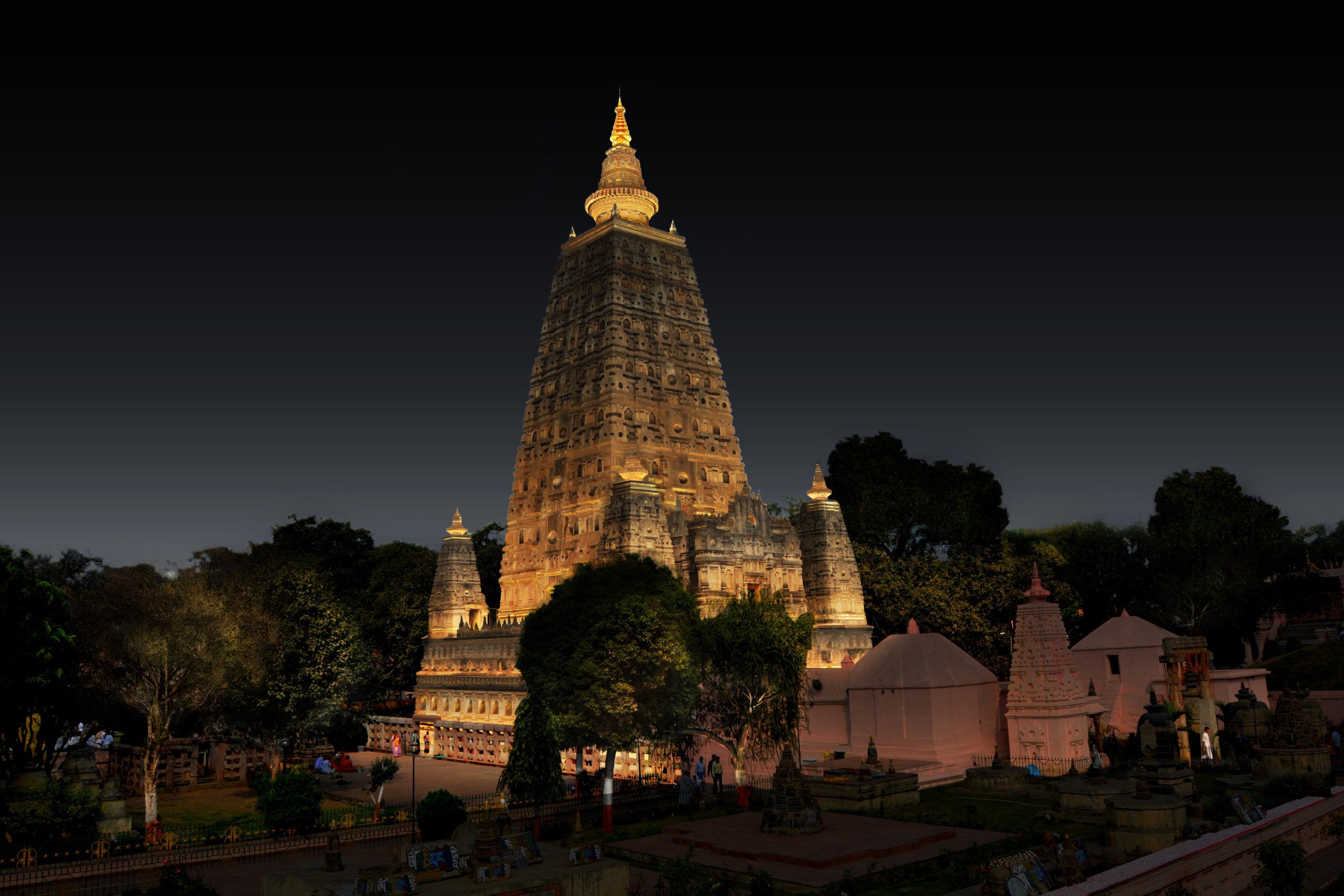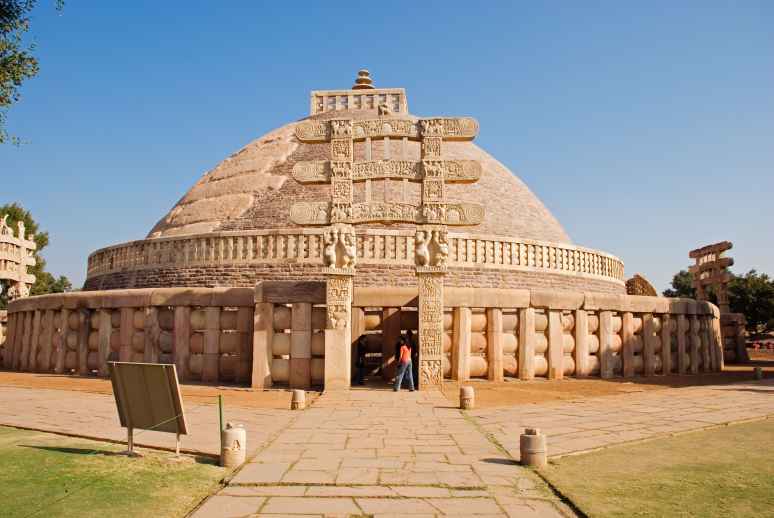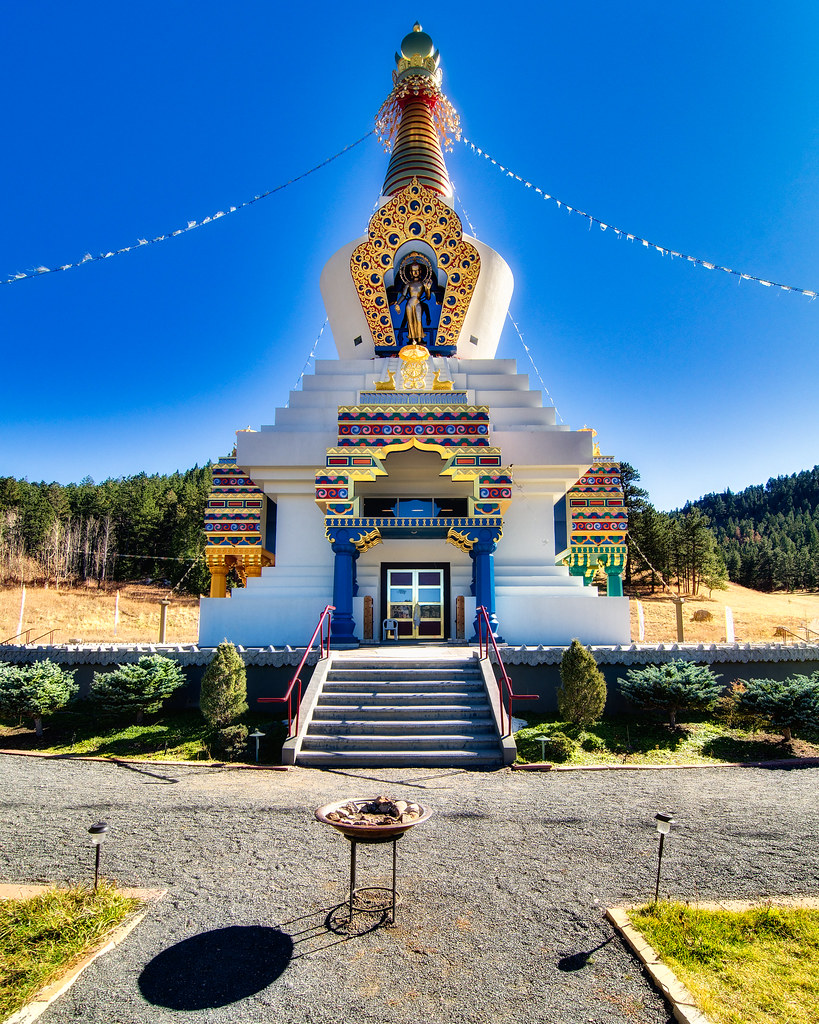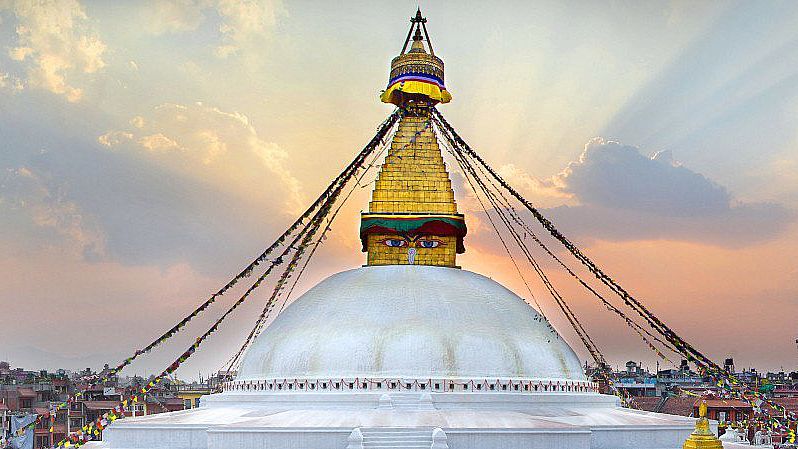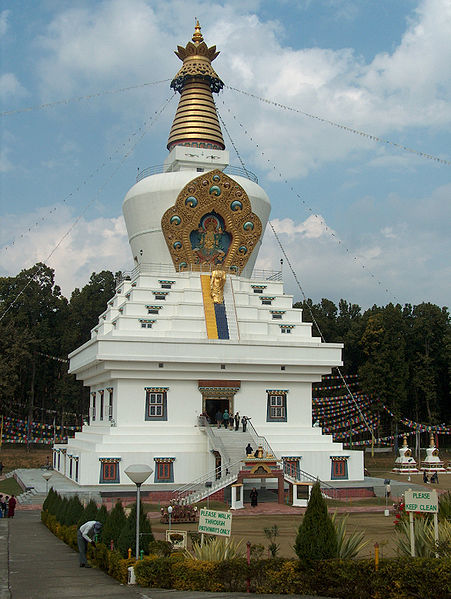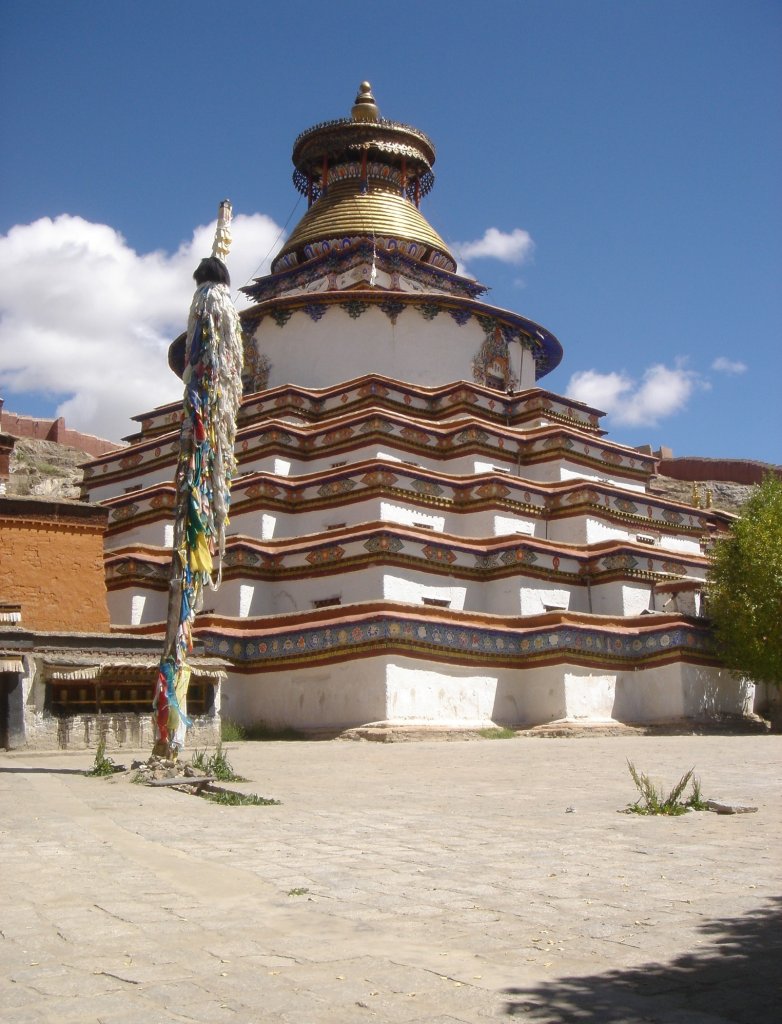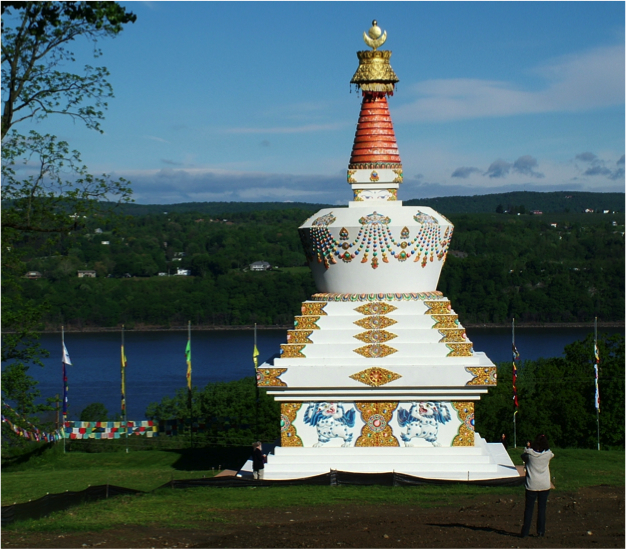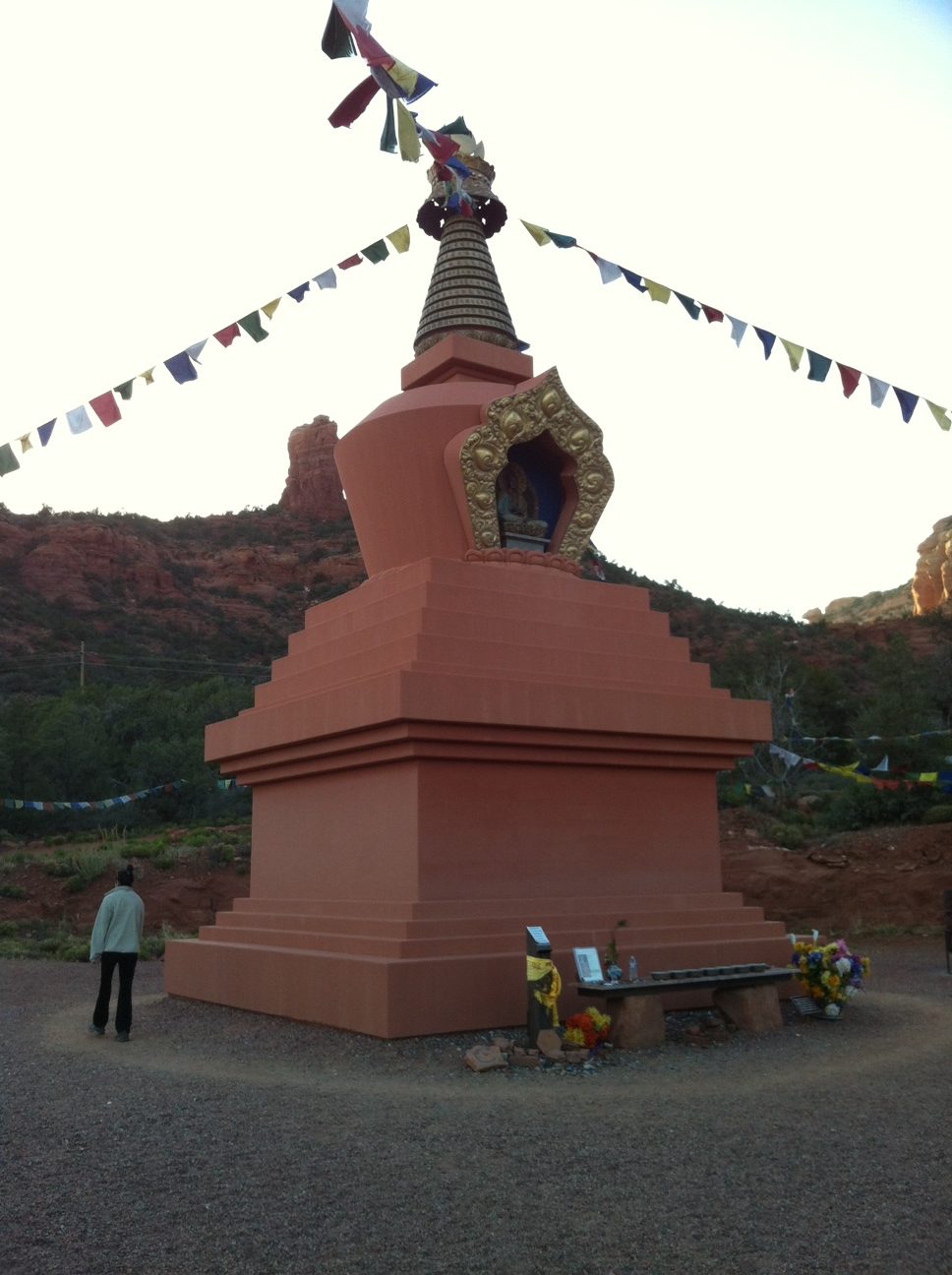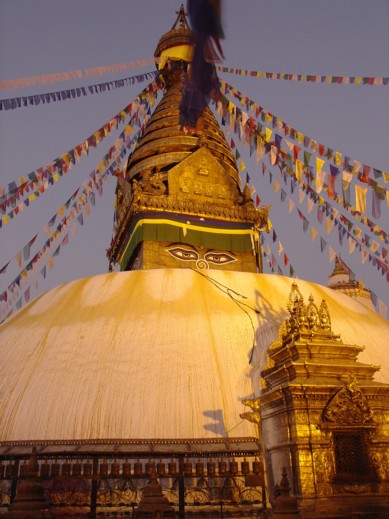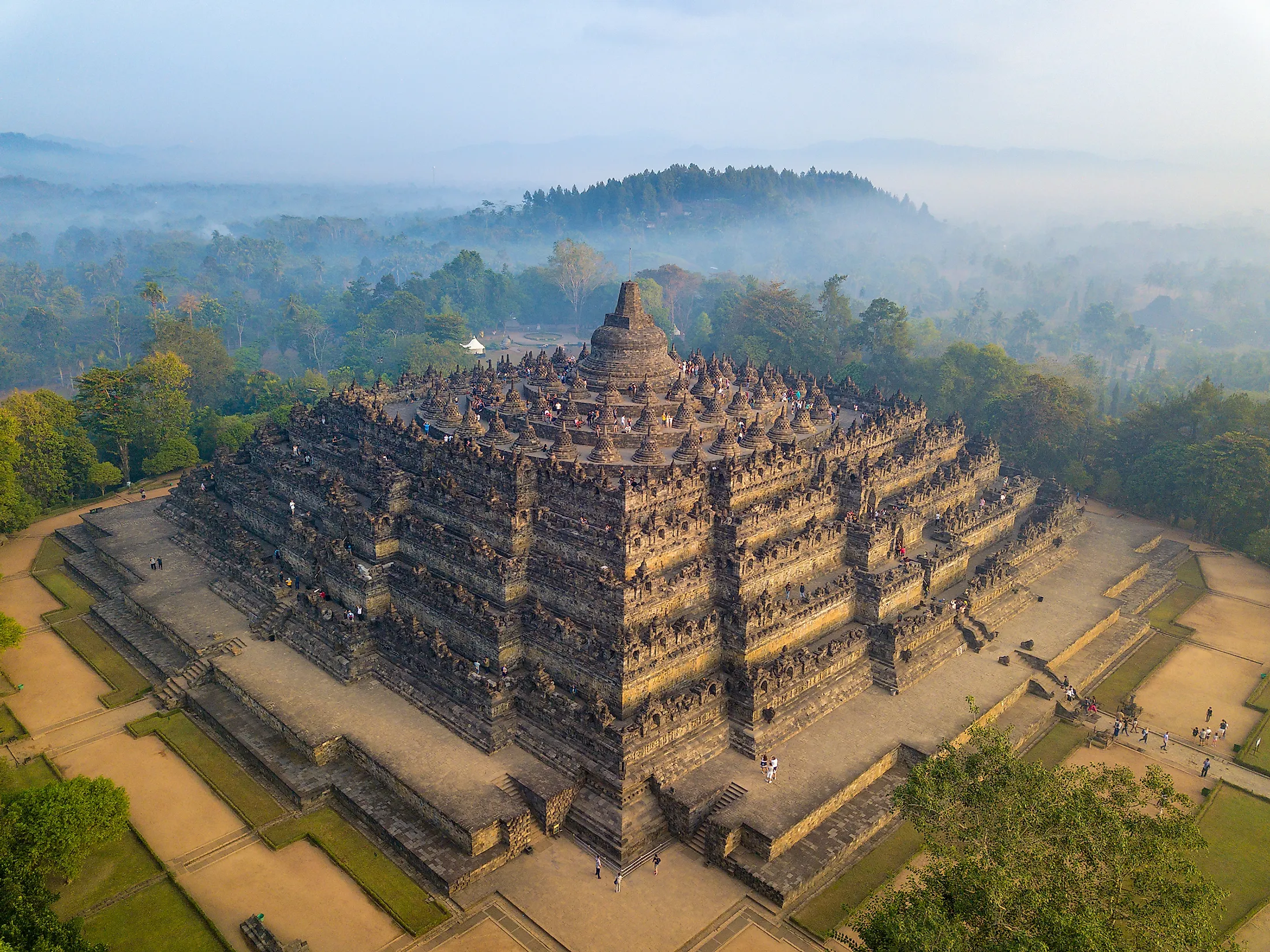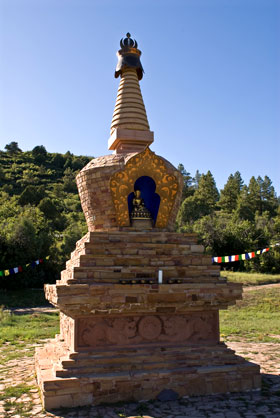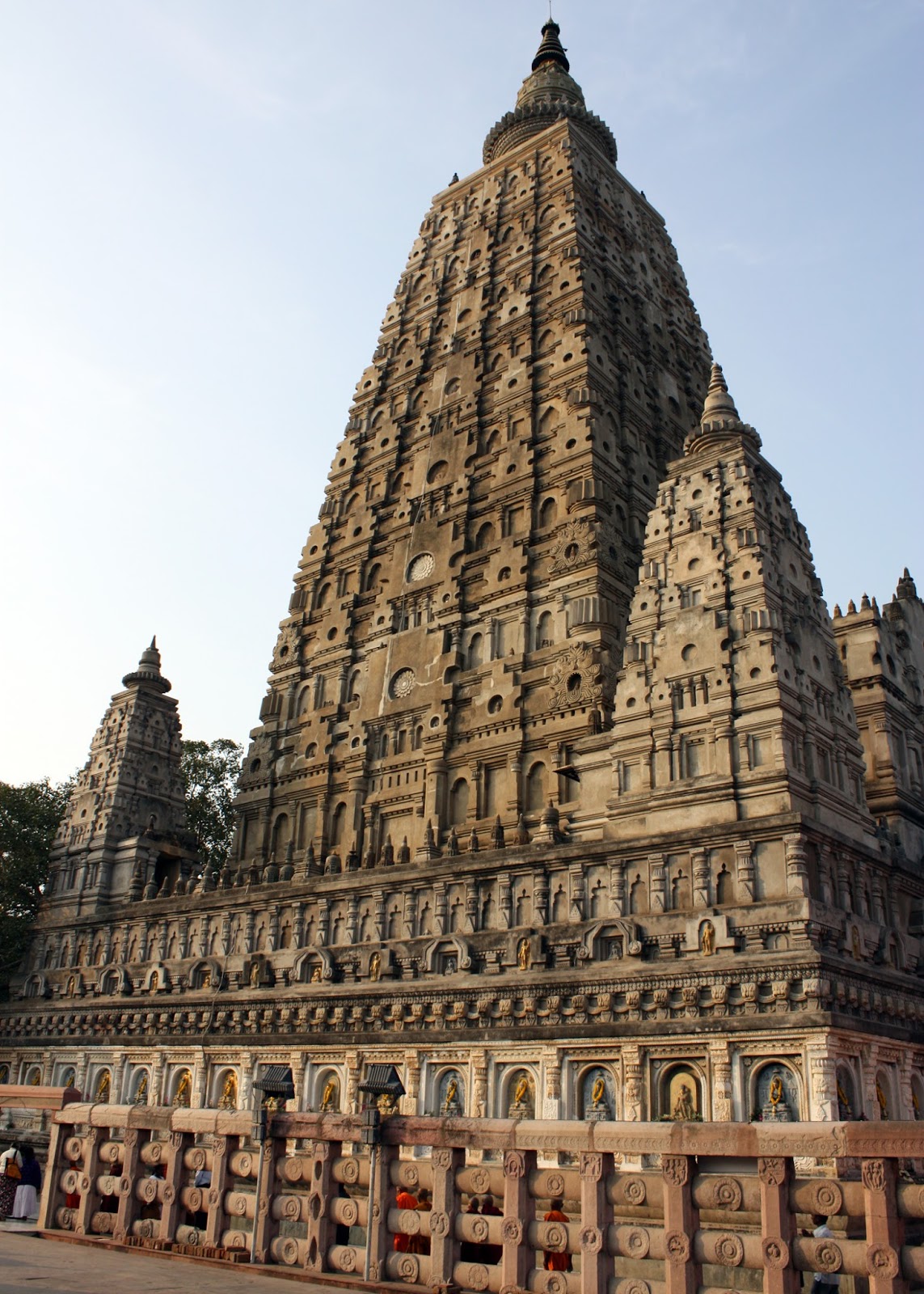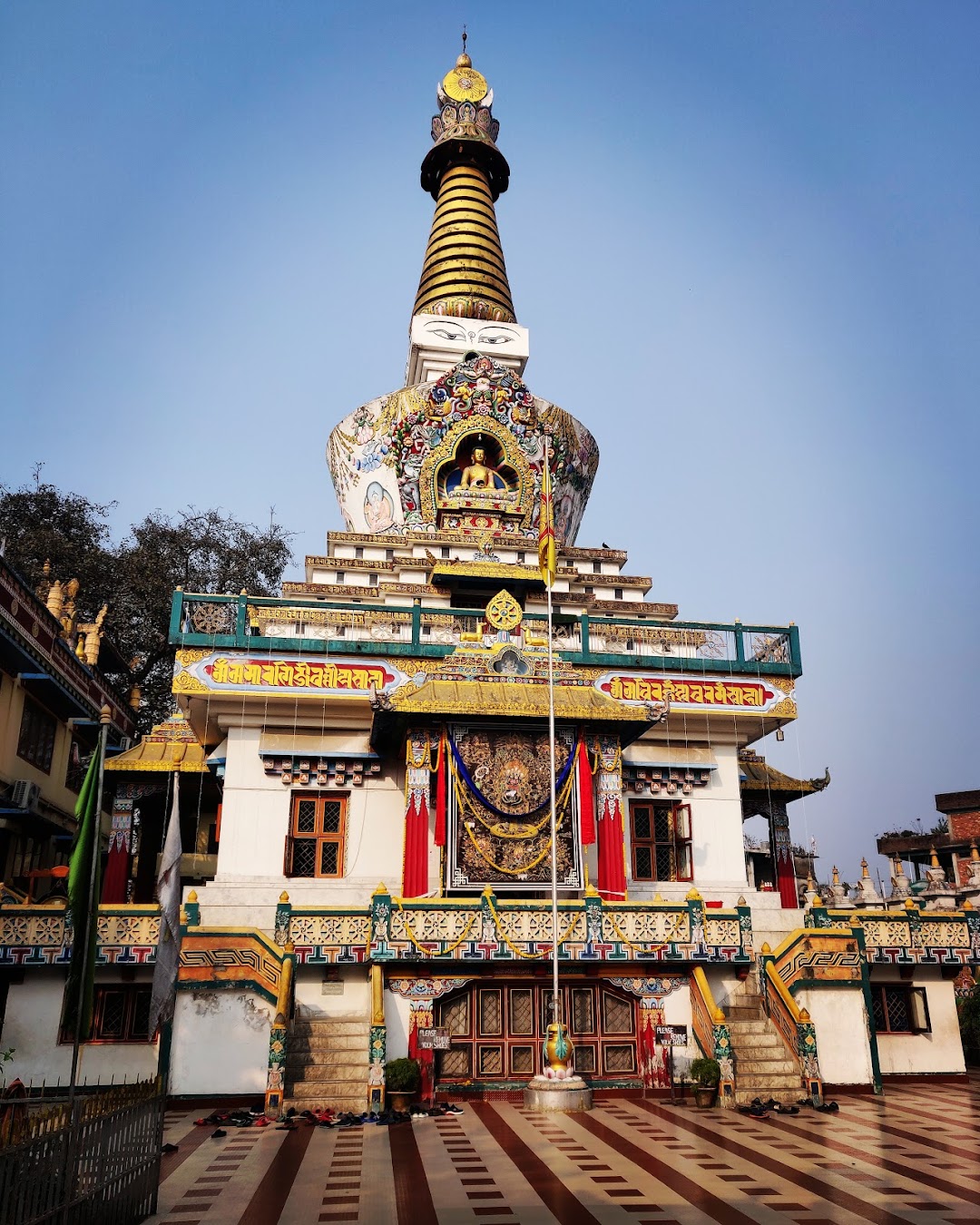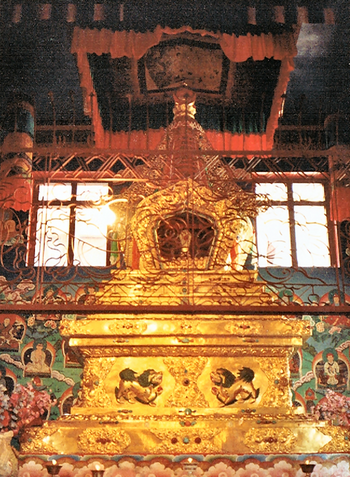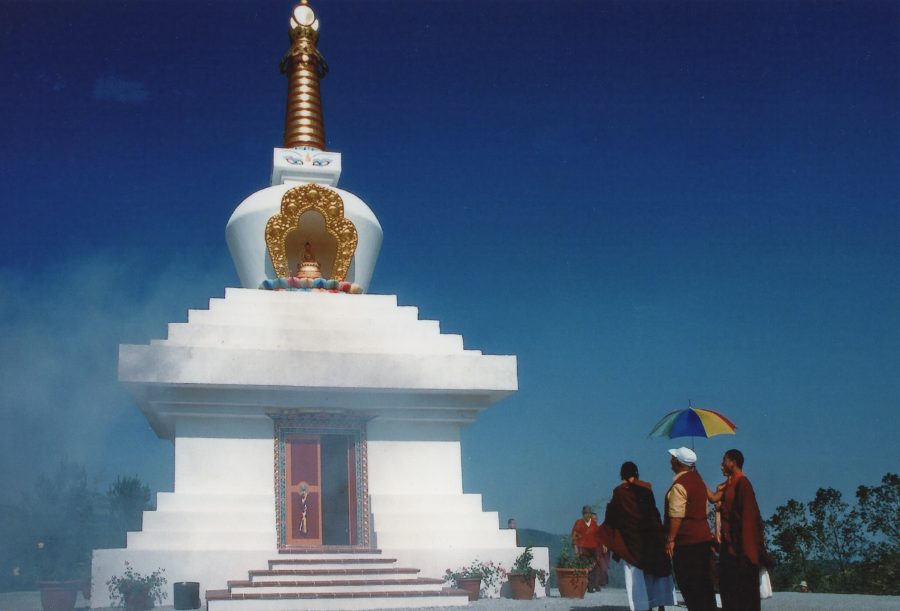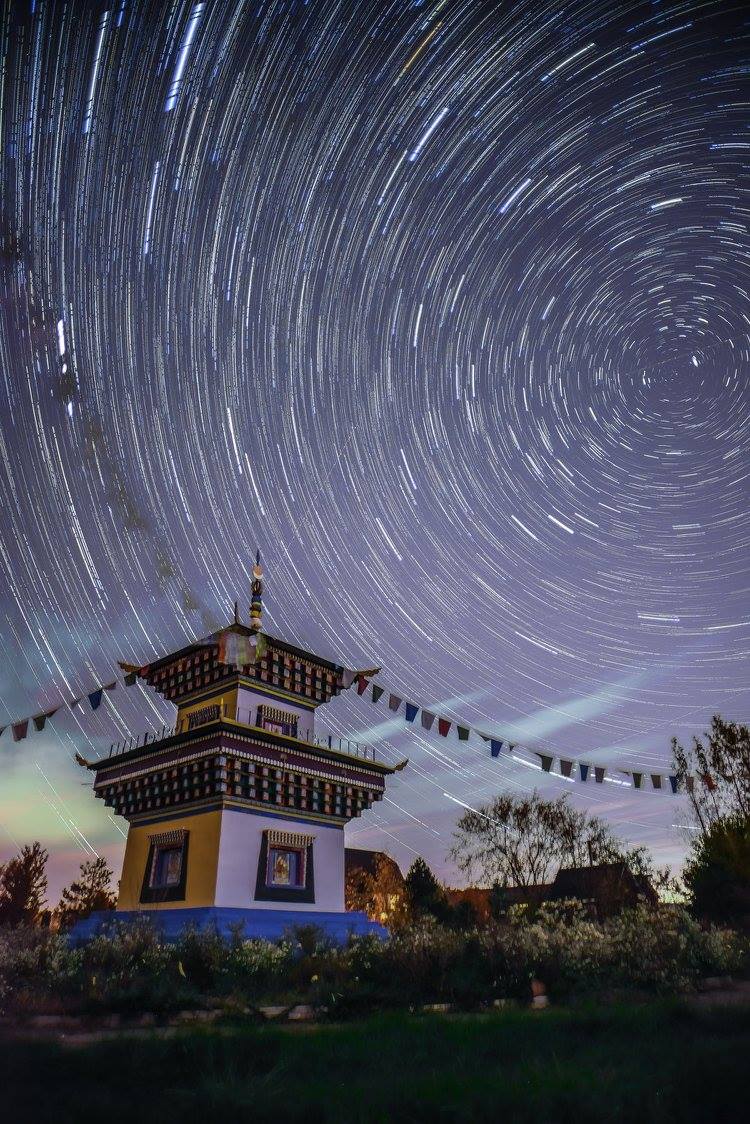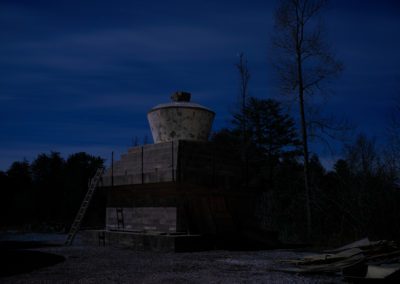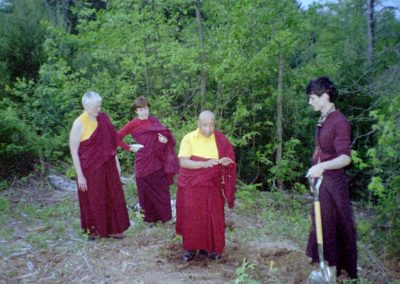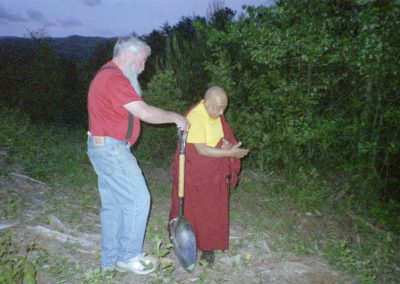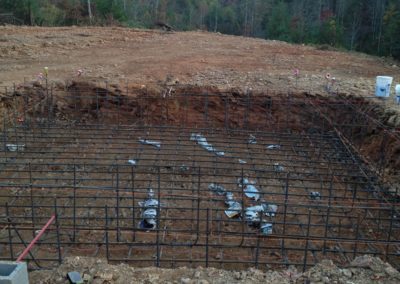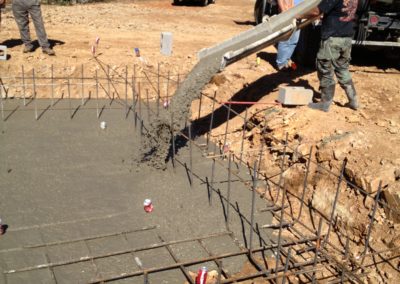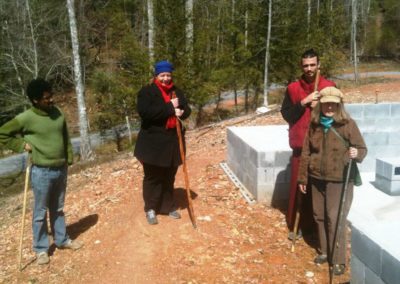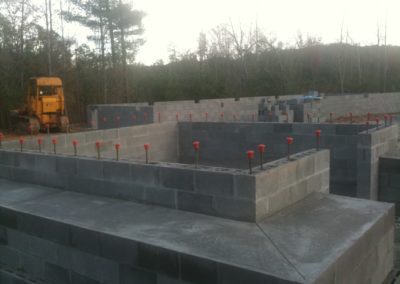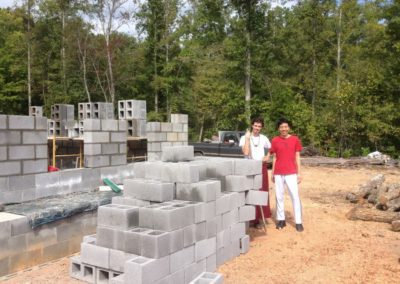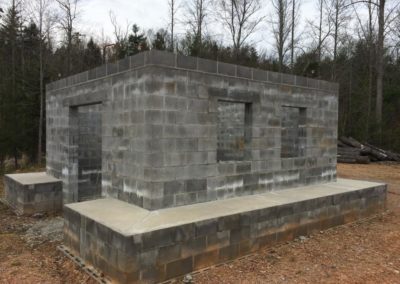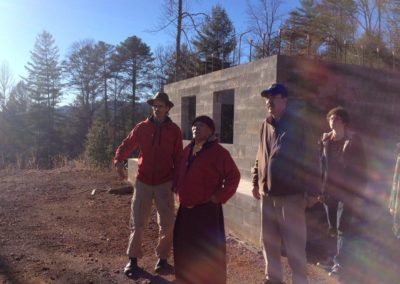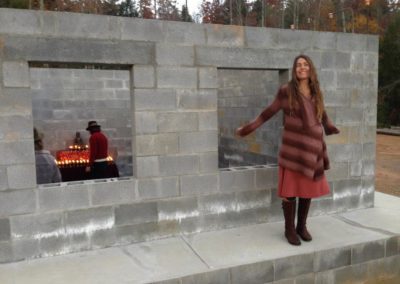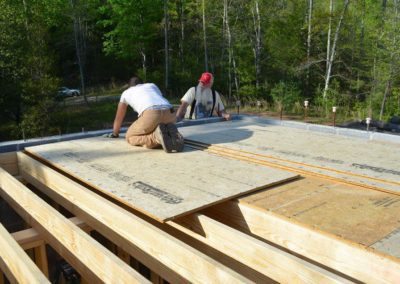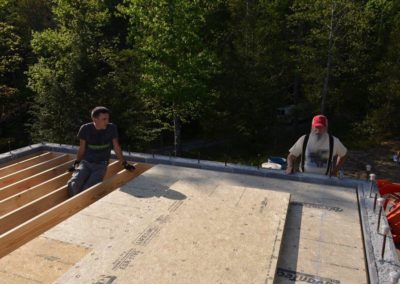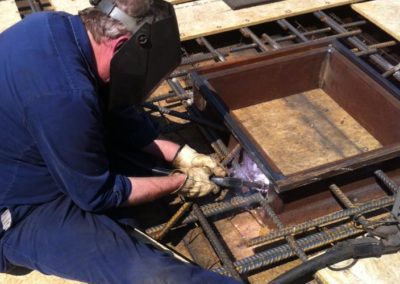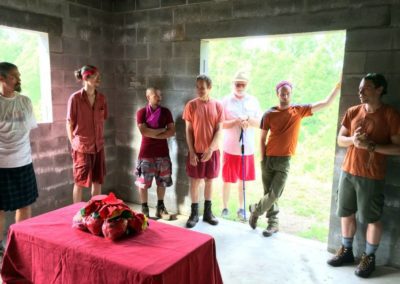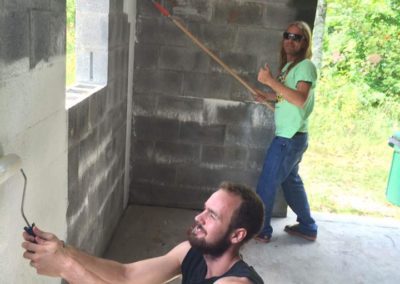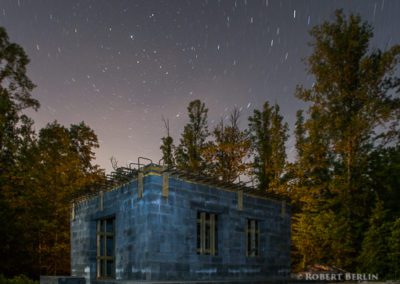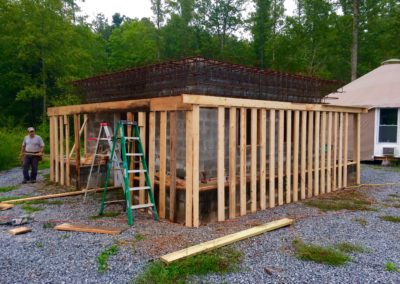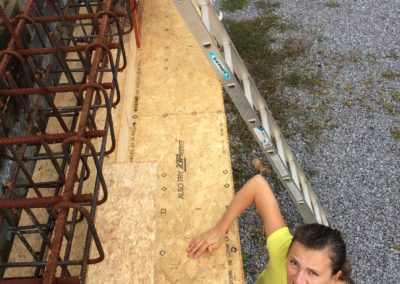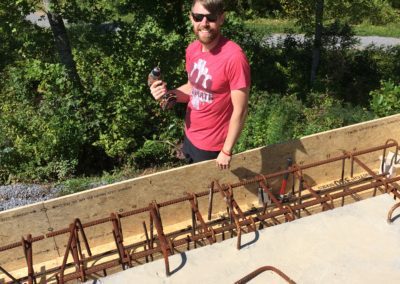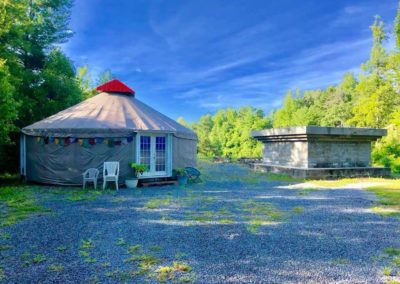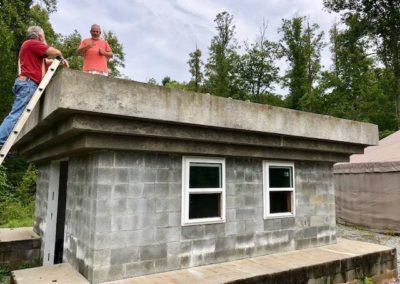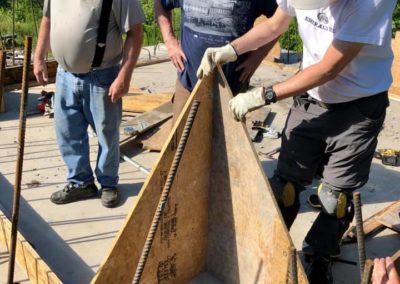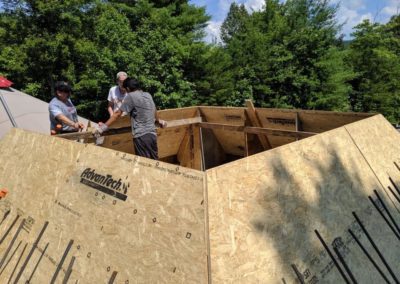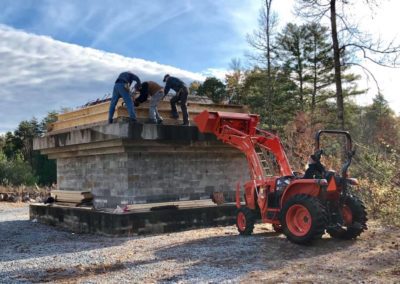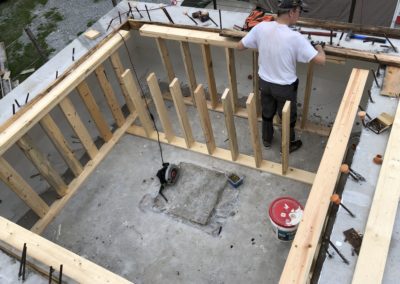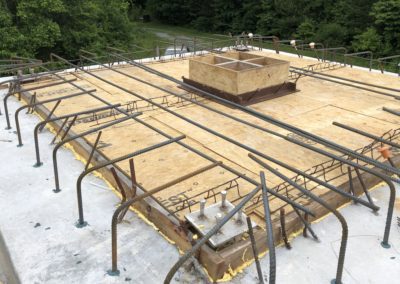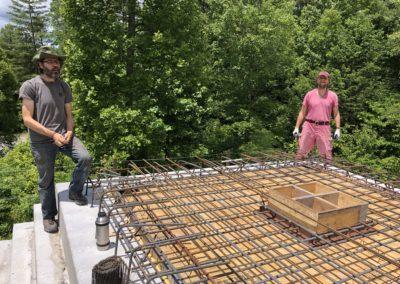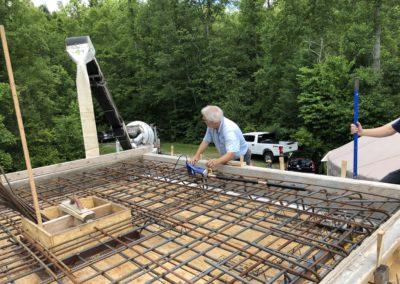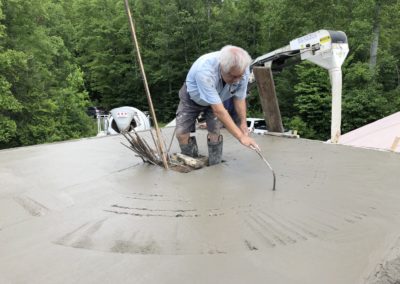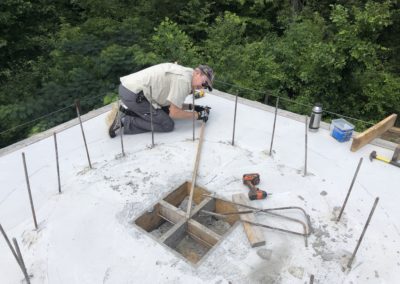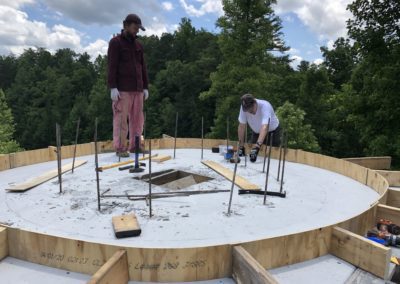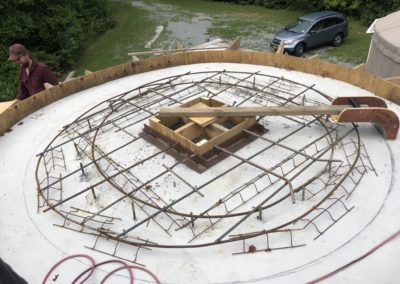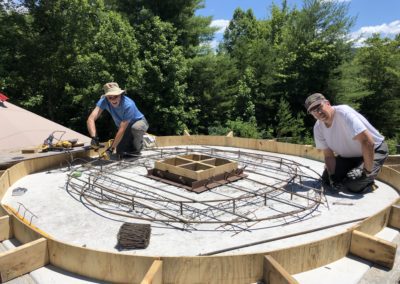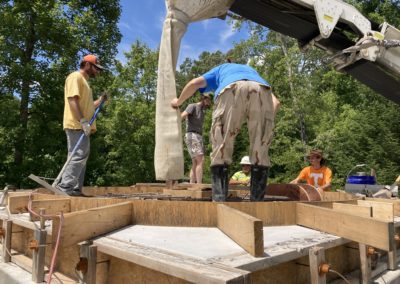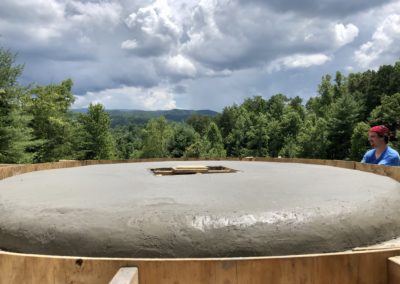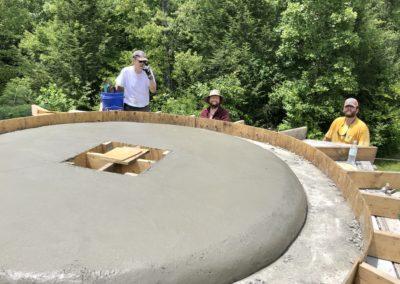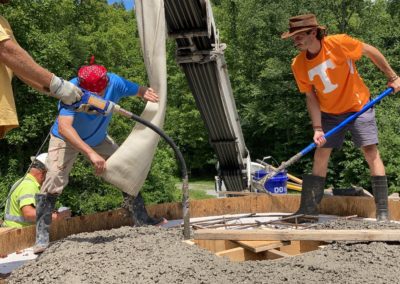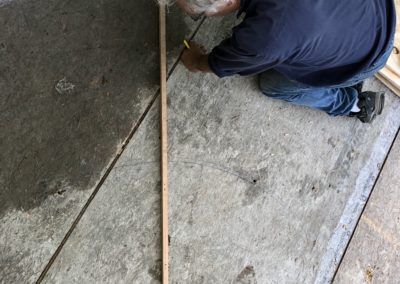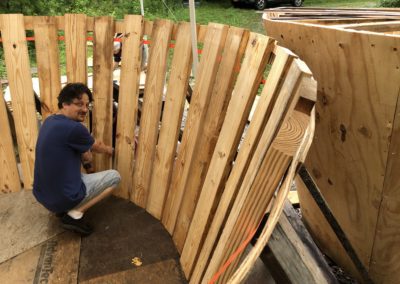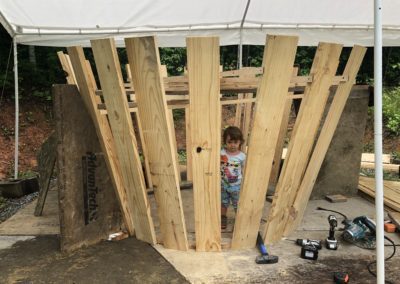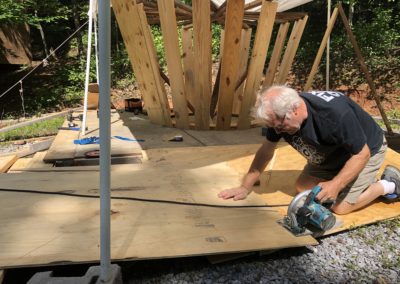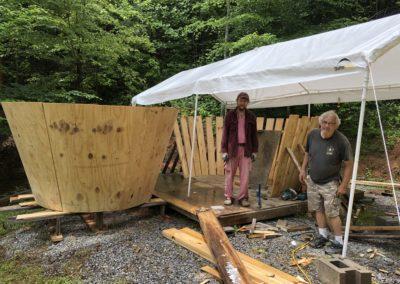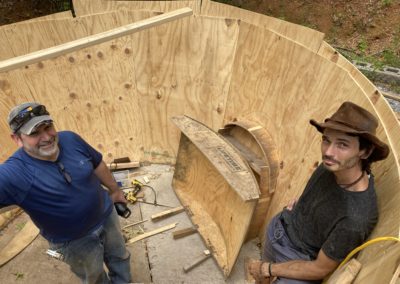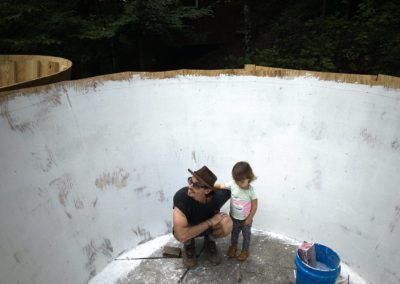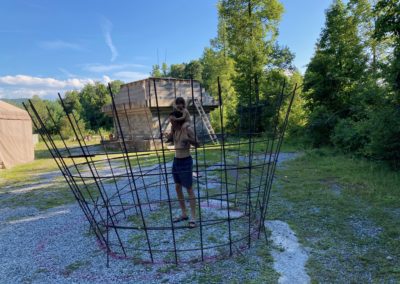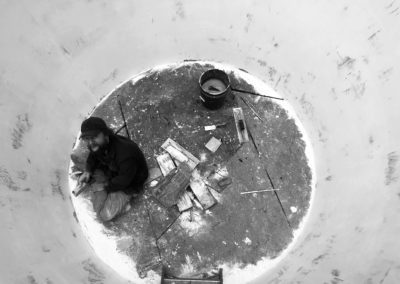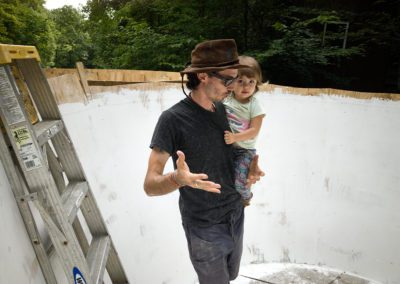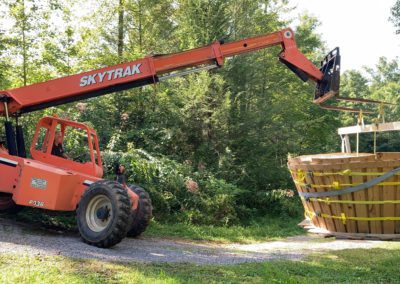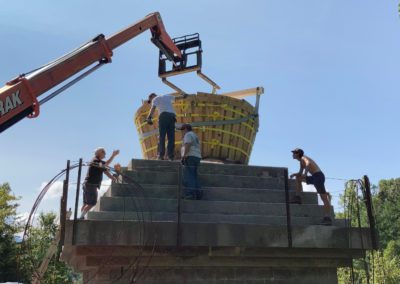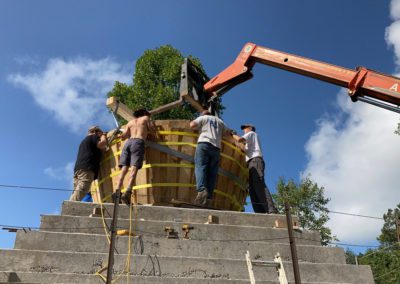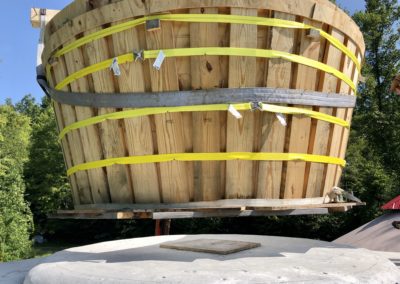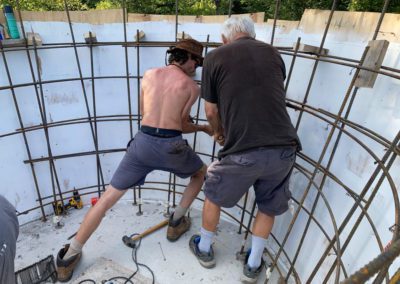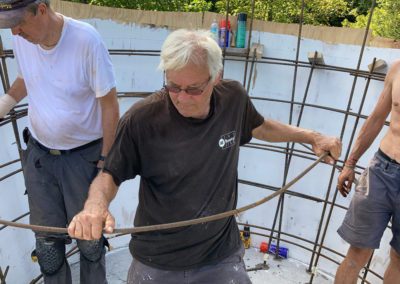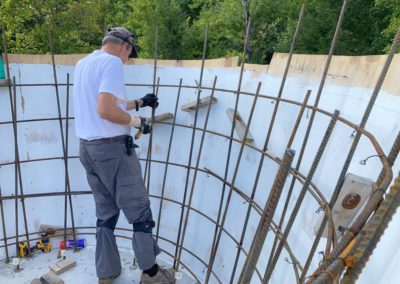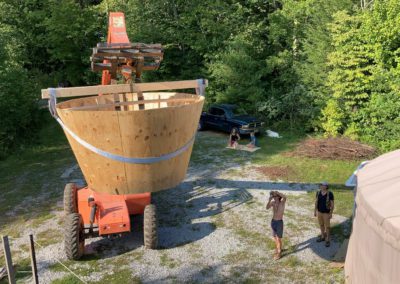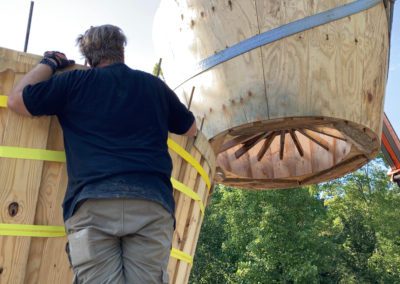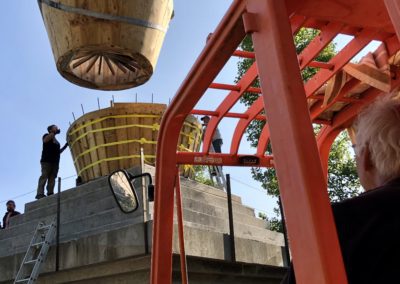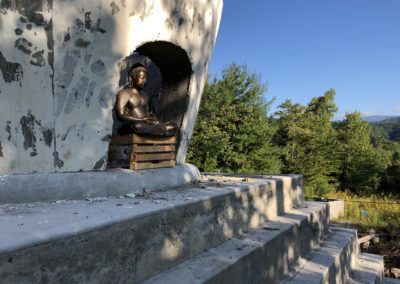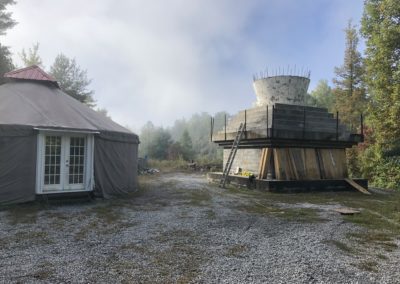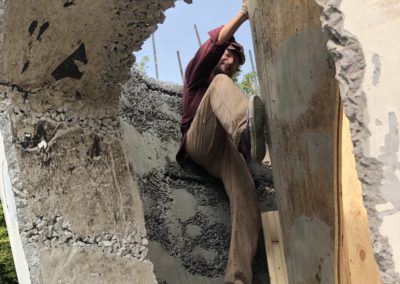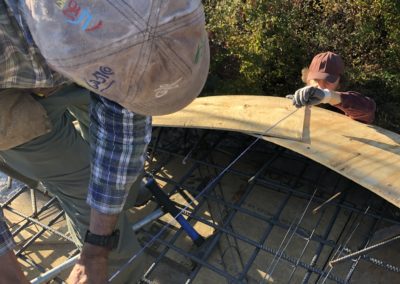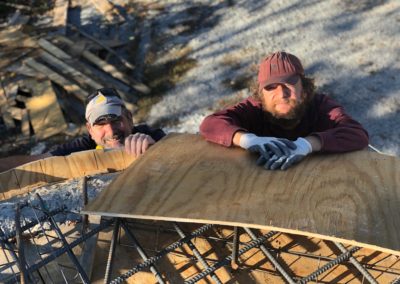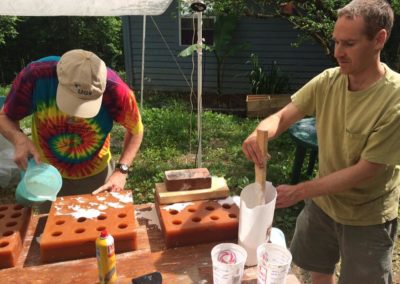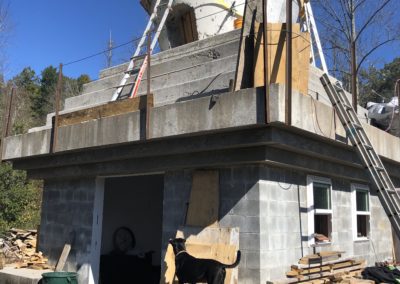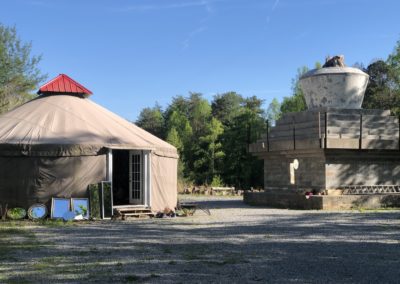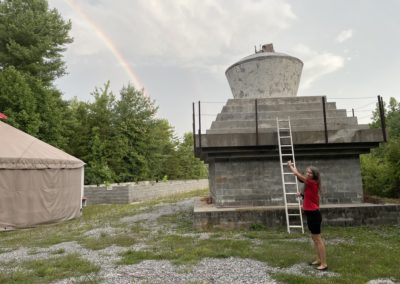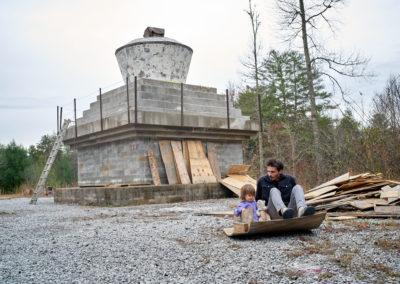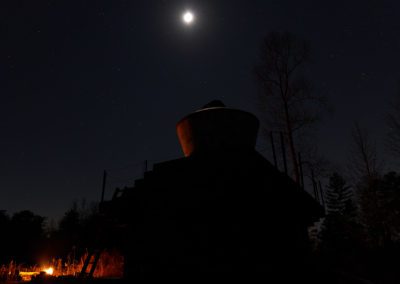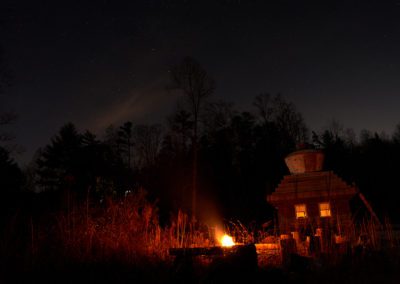Stupa
Earth Healing Stupa of Enlightenment
About the Project
Tai Situ Rinpoche, one of the most renowned teachers and meditation masters of the Tibetan Buddhist tradition, has highlighted the Smoky Mountain region of Tennessee as possessing uncommon qualities and potential for the construction of a stupa, a traditional Buddhist structure meant to harmonize, purify, and enhance the elements of an environment and the inhabitants within it.
Sacred Design
In the Tibetan view, a human body possesses pathways and focal points of energy that are indicators and controls of health and balance. The Earth too possesses channels of energy flow and “power places” that are of great importance. These dynamics affect the proper functioning and prosperity of a given region, and inform the health and flourishing of the biosphere as a whole. Like an acupuncture needle in the Earth, building structures such as stupas and hermitages in places that are connected to histories of trauma (environmental or social) can be a powerfully restorative force.
In India and Tibet, stupas were built as reliquaries of positive energy, as objects of homage for the accumulation of merit, to guard against natural disasters such as earthquakes and storms, to bring new life and balance to areas scourged by war or disease, and to create a protective barrier of sanity and positive energy in the face of aggression and destruction. Likewise, the construction of a stupa in the Smoky Mountain area will have a great effect in bringing back to balance the interconnected personal, social, and environmental wounds that this area has experienced in the past due to colonization, war, and environmental desecration.
Sacred Ground
The Appalachian mountains are among the oldest in the world and their biodiversity has remained untouched by oceanic and glacial disturbances. This refuge has allowed the species of the area to enjoy literally eons of diversification, and no other area of equal size worldwide in a temperate climate can match the Smoky Mountains’ amazing diversity of plants, animals, and invertebrates. Like a Garden of Eden, the region also served as the “seed cradle” for much of North America after the ice age, and is now the origin for the majority of water used in the American Southeast. Honoring these and other unique qualities, the United Nations has designated the Smoky Mountains as an International Biosphere Reserve.
Because of the natural preciousness of this geographic region, and through the interpenetration of local health and global prosperity and balance, participation in the construction of a stupa here will have a global effect. In this way, a single individual invested in such a project is therefore able to bring enormous benefit to themselves, the region, and the entire world.
Benefit Beyond Concept
It is said in the sutras (traditional Buddhist scriptures) that the merit of laying even one brick toward the construction of a stupa is inconceivable. This is true not only because of the power inherent in the design of such a structure, but also because of the expansiveness of the vision that fosters it. These are some of the ways in which the construction of a stupa can have unlimited, inconceivable effects:
Ecological
Most ecological views and programs aim at conservation and protection. The Buddhist view upholds this vision but goes further to emphasize a relationship of reciprocity between the earth and those who rely upon it. Building structures such as stupas and facilities for meditation practice and ritual are unique ways of actually giving back to the earth– not only protecting the sanctity of the earth and restoring the natural balance, but actually enhancing the vital radiance of the environment and its inhabitants.
Social
A stupa is a symbol and expression of focused communal intention. The cumulative power of this intention actualizes the potential of a community in order to help all beings realize their fullest potential. It is a local, tangible artifact in the service of unlimited, universal ennoblement.
Personal
Larger stupas such as ours contain a sanctuary within them which serve as sacred spaces for individual or group meditation and spiritual practice. By participating in the building of a stupa or visiting such a sacred site, the blessing and power that is communicated to the environment also becomes an immediate felt experience that purifies and enriches one’s own body and mind, leading to the realization of one’s innermost nature as completely perfect awakened awareness.
About the land and the stupa
In the words of the teachers …
If one knows how to explain from the texts, then all of the qualities and definition of a buddha is represented by the shape of a stupa.

